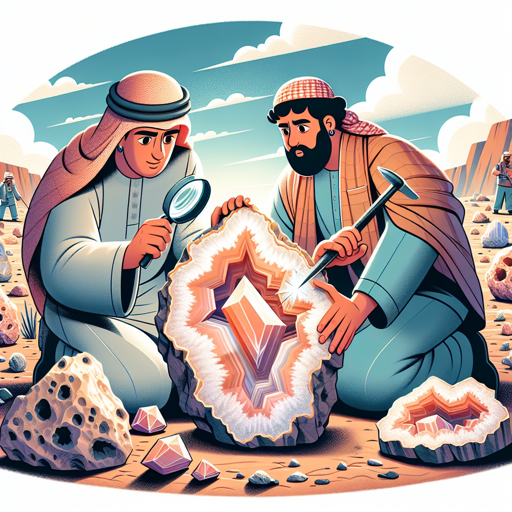A Comprehensive Guide to Geode Hunting
Discover the intriguing world of geodes: how to find, identify, and understand their formation process.

Introduction
Geodes are nature’s most captivating treasure chests. Hidden inside an unassuming exterior lies a dazzling world of minerals and crystals. For geology enthusiasts, educators, and anyone with a curiosity for the marvels of our planet, geode hunting offers a thrilling experience. This guide aims to equip you with the knowledge necessary to embark on your own geode hunting adventure.
What Are Geodes and How Do They Form?
Geodes are spherical rocks that contain a hollow cavity lined with crystals. The formation of a geode is a fascinating process that takes millions of years. It begins when a cavity forms within a rock, often due to volcanic activity. Over time, groundwater seeping through the rock deposits minerals into the cavity. As these minerals crystallize, they form the stunning array of crystals that we associate with geodes.
“The poetry of earth is never dead.” - John Keats
Where to Find Geodes
Geodes can be found all around the world, but there are certain locations where they are more prevalent. In the United States, for example, you can find geodes in states like Iowa, Indiana, Illinois, Missouri, Kentucky, and Utah. In these locations, you’ll often find geodes near riverbeds and streams, where the water has eroded the soil and exposed the geodes.
| Location | Type of Geodes |
|---|---|
| Keokuk, Iowa | Quartz and Calcite Geodes |
| Dugway, Utah | Dugway Geodes |
| Hauser Geode Beds, California | Hauser Geodes |
| Chihuahua, Mexico | Coconut Geodes |
Tips for Geode Hunting
- Research Your Area: Before you start your geode hunting adventure, study the geology of the area you’re in. Look for locations where volcanic activity or sedimentary formations have occurred.
- Bring the Right Tools: A good rock hammer, a sturdy bag or bucket, and safety goggles are essential items for your geode hunting kit.
- Look for Round Rocks: Geodes are typically round or oval, and have a lumpy surface. They’re also heavier than regular rocks.
- Test the Sound: When tapped with a rock hammer, geodes produce a hollow sound, unlike regular rocks.
Identifying Geodes
Once you’ve found a potential geode, there are a few ways to confirm your find. First, observe the weight. Geodes are typically heavier than normal rocks due to the crystal formations inside. Second, observe the shape and surface texture. Geodes are usually round or oval with a bumpy surface. Lastly, listen for a hollow sound when you tap it with your rock hammer.
For more information on geode hunting and identification, check out the Mineralogical Society of America’s comprehensive guide.
Conclusion
Geode hunting is a fun and rewarding activity that connects us with the natural world’s beauty and wonder. It offers a tangible way to explore geology, mineralogy, and our planet’s history. By equipping yourself with the knowledge in this guide, you are well on your way to finding your own hidden treasure. Happy hunting!